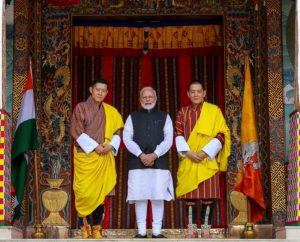Editor’s note: Jnan Nanda completed his BA Hons from the University of Peradeniya, Sri Lanka, and his MA from the University of Hong Kong where he presently teaches Reading in Buddhist Sanskrit Texts as a tutor at the Centre of Buddhist Studies. He also works for Buddhistdoor International. He starts his PhD in July 2014 at The University of Hong Kong.
Part Two: Buddhist Culture and Practices in Bangladesh
Part Two of this series on Bangladeshi Buddhism will explore some of the important Buddhist practices to be found in Bangladesh and the relationship Buddhism has with its followers.
Buddhist culture in Bangladesh, as in other Theravada Buddhist countries, reflects the daily life of Buddhists and their relationship with Buddhism. Throughout the year, the Buddhists in Bangladesh observe 12 Full Moon Days (called Purnima in Bengali), the most important ones being Vesak (Buddha Purnima or Baishakhi Purnima in Bengali), Ashari Purnima, Madhu Purnima, Pavarana Purnima, Maghi Purnima andPalghuni Purnima. (Dilip Kumar Barua: “Buddhist Ceremonies in Bangladesh”). During the 12 Full Moon Days, many lay followers undertake the Eight Precepts for either a day or one week, during which they receive spiritual guidance from the monastics.
Among the number of Buddhist ceremonies and festivals, the New Year in April and Kathina at the end of the Rainy Retreat (July to October) are noteworthy. In Bangladesh, the observance of the Rainy Retreat during which period they primarily reside in one location only going out under special circumstances by Bhikkhus is obligatory as mandated by the Vinaya. During this period, Buddhist monks and lay followers live a very religious life. Furthermore, the lay followers do not marry during the Rainy Retreat (July to October). They observe the Five Precepts daily as they consider this period to be very spiritual, as well as out of respect for the practices of the monks. Marriage ceremonies, among the Buddhists, instead are common after the Kathina ceremonies, which marks the end of the Rainy Retreat. During the marriage ceremonies, newly married couples listen to the chanting of Buddhist scriptures by monks and receive blessings to lead a happy married life. In appreciation, they give alms to the monks.
Sanghika-dana-s (offerings to Buddhist monks from lay followers) and chanting of Buddhist scriptures by Buddhist monks are common Buddhist practices in the country. Buddhist monks are invited to the homes of lay devotees for scriptural chanting and alms giving. Generally, sanghika-dana-s are offered in memory of the departed loved ones and relatives. During funeral ceremonies, monks are invited to conduct funeral rites and deliver sermons on impermanency to enlighten the lay followers before cremation takes place. Seven days after the funeral, a memorial sanghika-dana is offered to the community of monks to transfer merit to the departed ones. Among the several gifts donated to the monks in the sanghika-dana, a very special feature is the donation of the attha-parikkara (the eight utensils of a monk: robe, under robe, shoulder scarf, belt, bowl, razor, needle and thread, and water strainer.)




Another vital feature of Buddhist culture in Bangladesh is the ordination ceremony, which is common in the Buddhist regions of the country. According to the Buddhist tradition of Bangladesh, males should be ordained once in a lifetime for at least one week. This feature is shared by the Buddhist traditions of Myanmar and Thailand, where it is encouraged that males take ordination vows once in a lifetime. Spending some time learning the Dhamma and living a spiritual life for a few days helps to remind the newly ordained monk to be moral during his life. Indeed, there is a high degree of respect from society towards ordained monks for this achievement. Some believe that it also helps in finding a better life partner for marriage.
Sometimes, this short spiritual process leads some monks to take higher vows in life. Being convinced by the spiritual practices, some take the vow of accepting the monkhood forever. Such committed novice monks go through spiritual guidance under the supervision of their seniors and later proceed to obtain upasampada (higherordination), which promotes them to become fully-fledged monks in the Buddhist Sangha.
During the Buddha’s time, as recorded in the Pali Canon, a person received both the samanera and bhikkhu(upasampada) ordinations with the Buddha’s utterance of ‘ehi bhikkhu’ (Come O Bhikkhu!) However, when Buddhism was emerging throughout and beyond India, the samanera and upasampada ordinations were later differentiated with the samanera ordination being simpler and less complicated while the upasampada was lengthened with more religious and ceremonial features added to the ordination ceremony.
Generally, as in other Theravada countries, ordination ceremonies are held before the commencement of the three-month Rainy Retreat. Although the number of monks aspiring for upasampada are very often not that many, crowds of Buddhist devotees take part in such ceremonies for veneration and merit-acquiring purposes. It is believed that the newly higher ordained monks are pure which is why they are worthy of much veneration and offerings.
Part Three will look at some examples of contributions made by prominent Buddhist figures in Bangladeshi Buddhism.
Part One of the article: http://newlotus.buddhistdoor.com/en/news/d/37503






